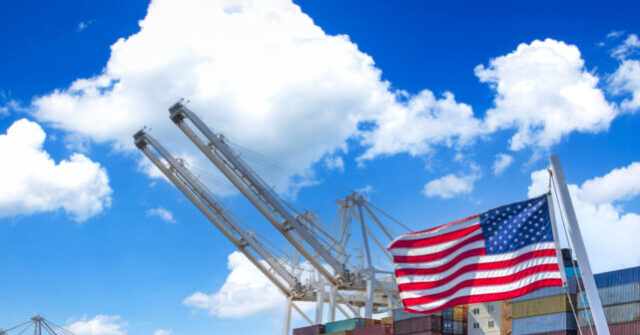With a sweeping new round of tariffs expected this week, the Trump administration this week released a comprehensive report on the rules, taxes, and red tape it says are stacked against American exporters. From obscure licensing delays in Vietnam to sky-high dairy tariffs in Canada, the list highlights what officials describe as a global trading system in need of rebalancing.
The Office of the U.S. Trade Representative’s annual National Trade Estimate Report on Foreign Trade Barriers outlines, over the course of 397 pages, the wide range of obstacles faced by American producers, including high tariffs, complicated regulatory schemes, value-added taxes at the border, and currency policies that tilt the field in favor of foreign competitors. While many of the grievances are familiar, the breadth and detail of the report make clear the administration’s intent: to confront these barriers directly with reciprocal tariffs.
“No American president in modern history has recognized the wide-ranging and harmful foreign trade barriers American exporters face more than President Trump,” said U.S. Trade Representative Jamieson Greer. He said the administration was working “to address these unfair and non-reciprocal practices” and restore fairness for American businesses.
A Patchwork of Barriers
The report describes not just high foreign tariffs, but also a complex web of non-tariff measures (NTMs) that can quietly block U.S. goods from reaching overseas markets. These include:
-
Customs delays, excessive inspections, and duplicative testing requirements.
-
Labeling and packaging rules that change frequently or differ from global norms.
-
Import quotas and price controls that limit market access.
-
Government procurement rules that shut out U.S. firms from bidding on contracts.
Countries like India, Vietnam, Indonesia, and Ukraine are cited for slow and opaque import licensing systems. Mexico faces criticism for sudden regulatory changes that hit U.S. agricultural and medical exports. Turkey is flagged for piling extra duties on top of high base tariffs and slapping consumption taxes on products like American-made vehicles and spirits.
Even long-time partners like the European Union come under fire for food safety and environmental regulations that the report says are “not based on scientific evidence.” Among them: bans on genetically engineered crops, restrictions on common pesticides, and a new carbon tax on imports tied to how goods are produced.
For many U.S. exporters, these barriers aren’t theoretical—they’re daily hurdles. A small food producer might find their shipment stuck at a port for weeks due to ever-shifting documentation rules. A tech company could be locked out of a foreign bidding process by a regulation written to favor state-owned competitors.
VATs and Currency Policies
The report also points to foreign value-added tax (VAT) systems as a hidden burden on U.S. exports. While the United States relies on state and local sales taxes, most of its trading partners impose VATs that are levied on imports but refunded for domestic producers—effectively acting as border taxes. These practices are highlighted in countries such as Argentina, Mexico, and China, where VAT rebates are used to support favored industries.
On currency, the report notes that foreign exchange policies in countries like Vietnam, Nigeria, and Ethiopia—including capital controls and artificial currency pegs—can suppress import demand and tilt the playing field against U.S. companies. While formal designation of currency manipulation falls to the Treasury Department, the USTR warns that these practices distort trade in real and measurable ways.
Liberation Day Approaches
President Trump is expected to announce his reciprocal tariff policy on Wednesday, April 2, during a Rose Garden ceremony at the White House. The president has dubbed the day “Liberation Day,” promising a decisive step toward fairness in trade.
The tariffs are expected to be calibrated to reflect the kinds of barriers detailed in the USTR report—whether through high tariffs, border taxes, regulatory hurdles, or currency misalignments. Officials have said each country will be evaluated individually, using a combination of trade metrics and policy practices.
With the USTR report now public, the administration believes it has both the data and the mandate to act. For many of America’s trading partners, and for U.S. exporters long sidelined by invisible barriers, the rules of global trade may be about to change.
Read the full article here


